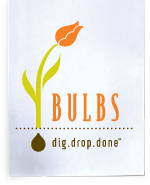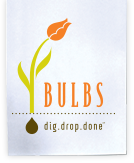Keeping a Garden Journal
 Do you remember what bulbs you purchased last year? How about their bloom time? What was the date of the first frost? Did you come across an interesting or unique perennial this past year and wanted to give it a try? When recording your gardening activities, the details make the difference, and a garden journal can help you keep track of those details to build on your own gardening expertise.
Do you remember what bulbs you purchased last year? How about their bloom time? What was the date of the first frost? Did you come across an interesting or unique perennial this past year and wanted to give it a try? When recording your gardening activities, the details make the difference, and a garden journal can help you keep track of those details to build on your own gardening expertise.
What to Record
A garden journal does not have to be intimidating, and you do not have to be either an expert writer or an expert gardener to keep one. You are simply keeping record of your garden and notes on what worked, what didn't, what you wanted to try, what you wanted to change and more. A simple sketch of your garden or landscape provides a basic plan. Track the dates of planting and blooming, fertilizer applications, pruning and other maintenance duties to determine if the activities are worthwhile and effective. Map the placement of bulbs and perennials so you don't plant over them, early in the season, when their top growth disappears. Note your color combinations. Did they look good or was something missing? Maybe you saw an article with some ideas to try, so tuck it in your journal for safekeeping and as a reminder.
A garden journal provides a great place to save sketches, lists and photos. Depending upon your personal use, they can store excess seeds and plant tags, bed rotation and fertilizing schedules, even gardening brochures.
Now is a perfect time to start a garden journal. Chances are you’re cooped up in the house during the long winter and probably have lots of ideas about the upcoming season. Beginning a garden journal now ignites your creativity, sets your goals for the upcoming year and lets you plot your garden journey. Twelve months from now, when you look back and review your goals and plans, you’ll see how much you’ve done. Then, you can look forward to the following year and make another great plan, thanks to the notes you've kept.



